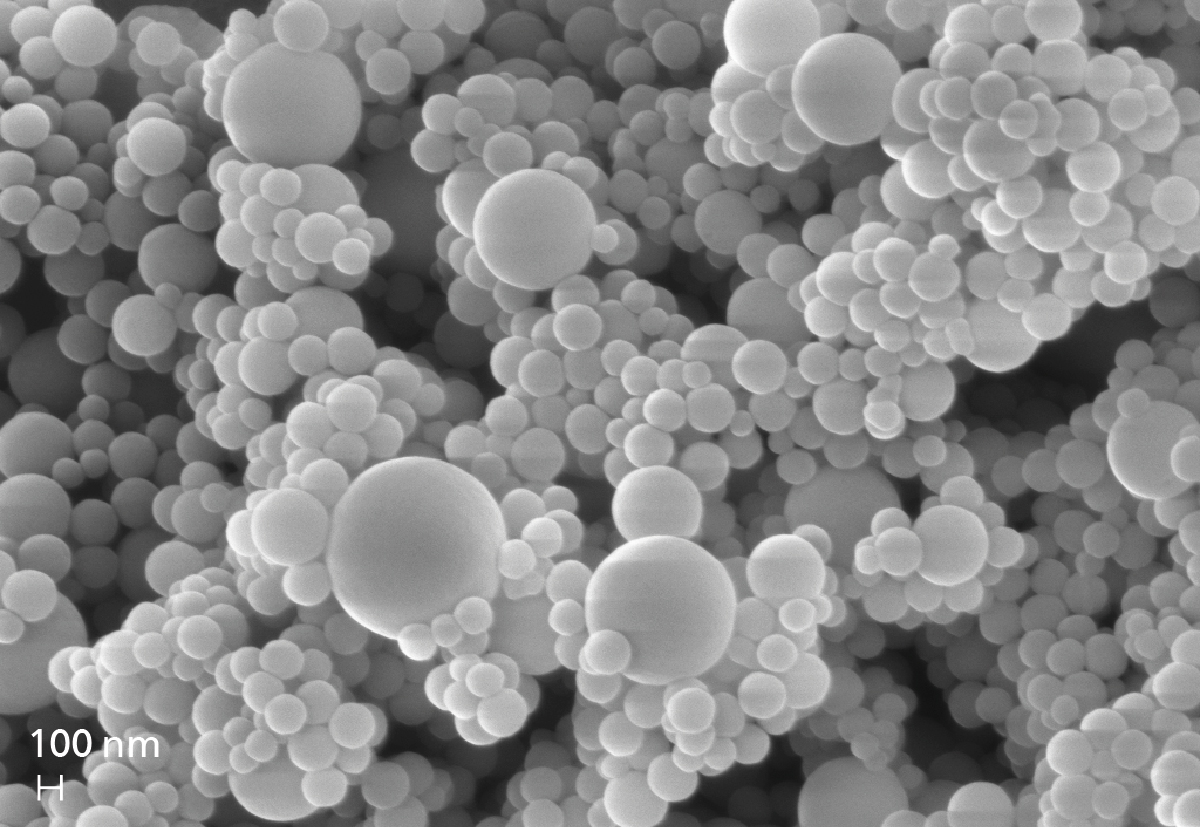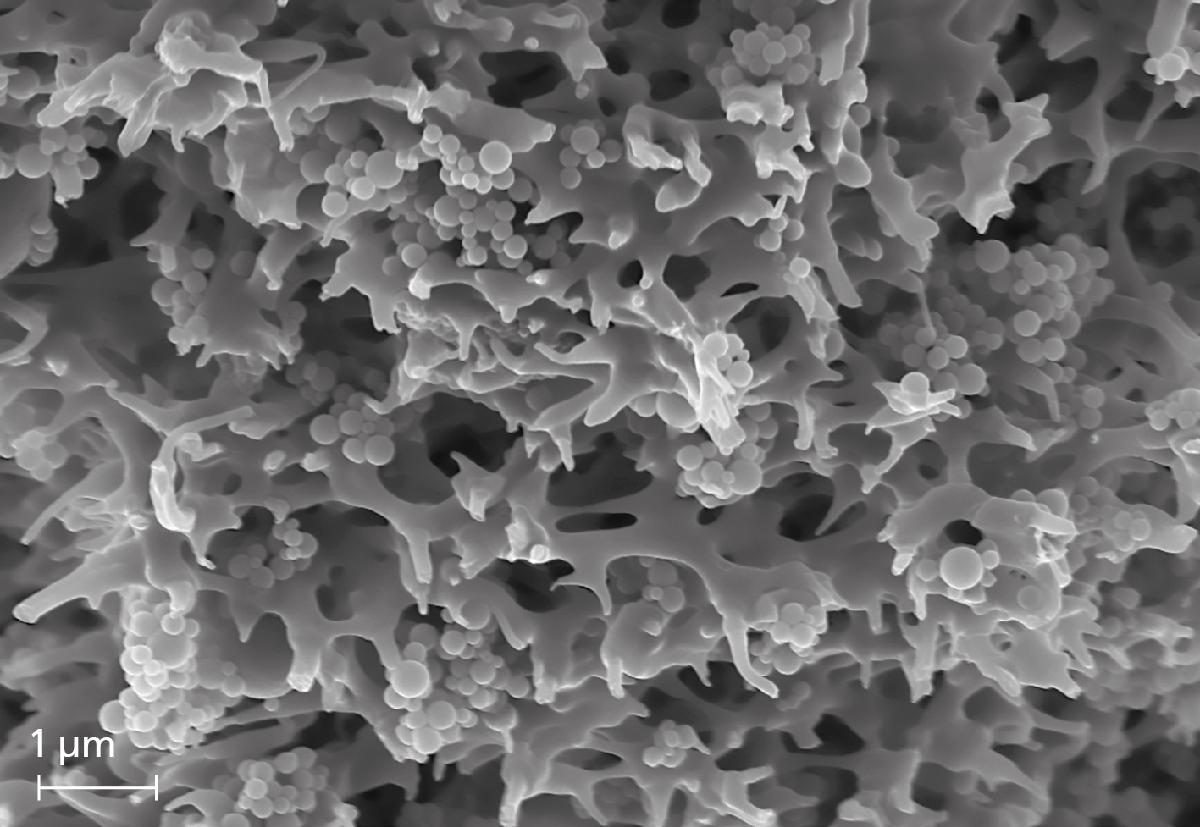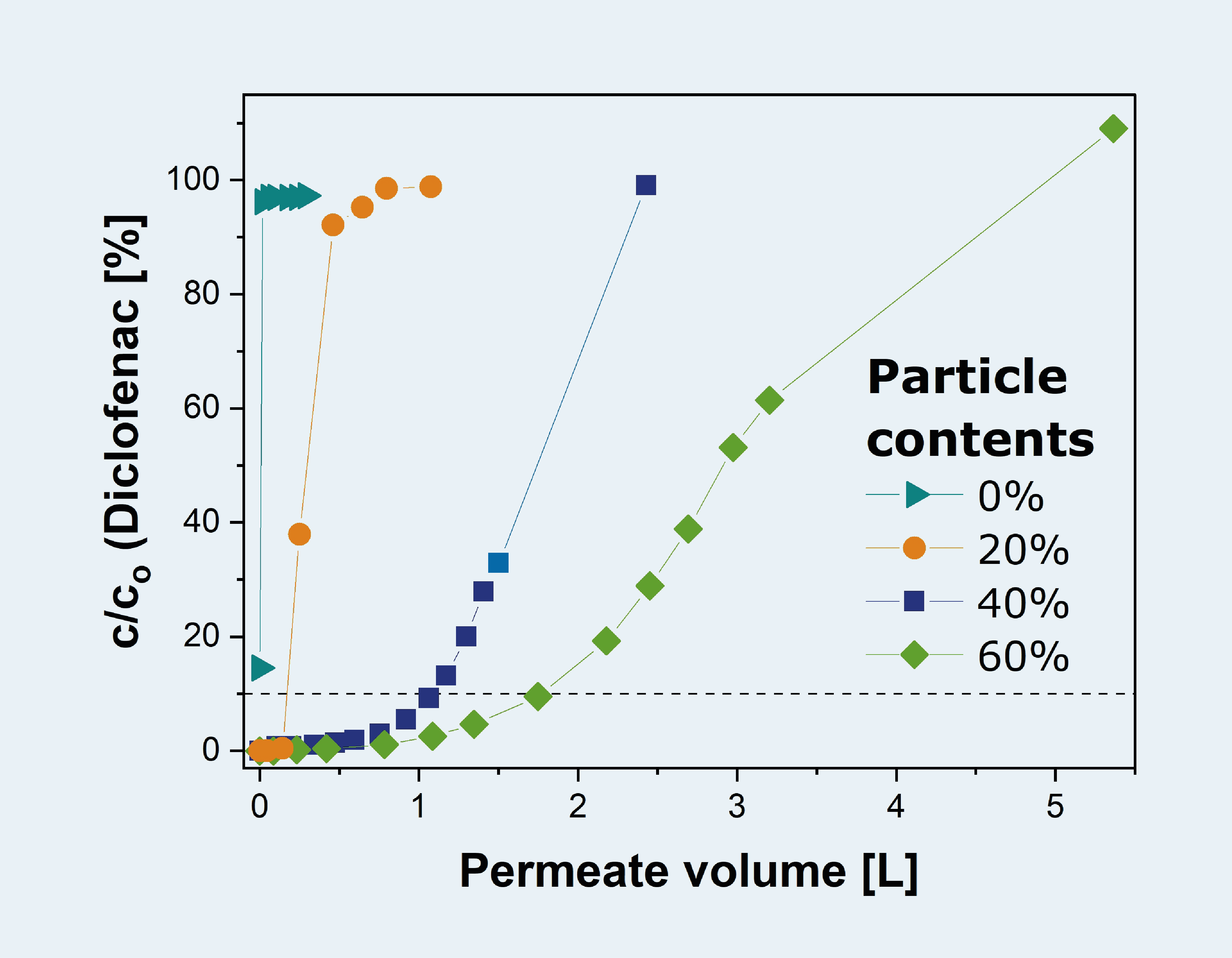For their separation, we are developing so-called membrane adsorbers at the IGB, which allow filtration and adsorption to be combined in a single process. This concept has so far been used mainly in downstream processing in biotechnology to separate low concentrations of small molecules using microfiltration – especially when one can only work at low pressure. At Fraunhofer IGB, we are working on transferring this concept for the treatment of water.
Tailored membrane adsorbers by embedding sub-micrometer particles with specific binding sites
To this end, we are developing sub-micrometer particles with special binding sites for various substances. By embedding such particles in the membrane, customized membrane adsorbers can be produced. The particles can be produced e.g. by mini emulsion polymerization. Subsequently, we disperse the particles in a polymer solution, from which a porous membrane is then precipitated via a phase inversion process.
Combined membrane adsorbers with high retention rate
Membrane adsorbers are now available that can be used to separate different micropollutants such as diclofenac, sulfamethoxazole, metoprolol and carbamazepine together.
For diclofenac, we have achieved adsorption capacities of up to 9.8 g m-2, retaining more than 99% of the diclofenac before breakthrough.
 Fraunhofer Institute for Interfacial Engineering and Biotechnology IGB
Fraunhofer Institute for Interfacial Engineering and Biotechnology IGB

